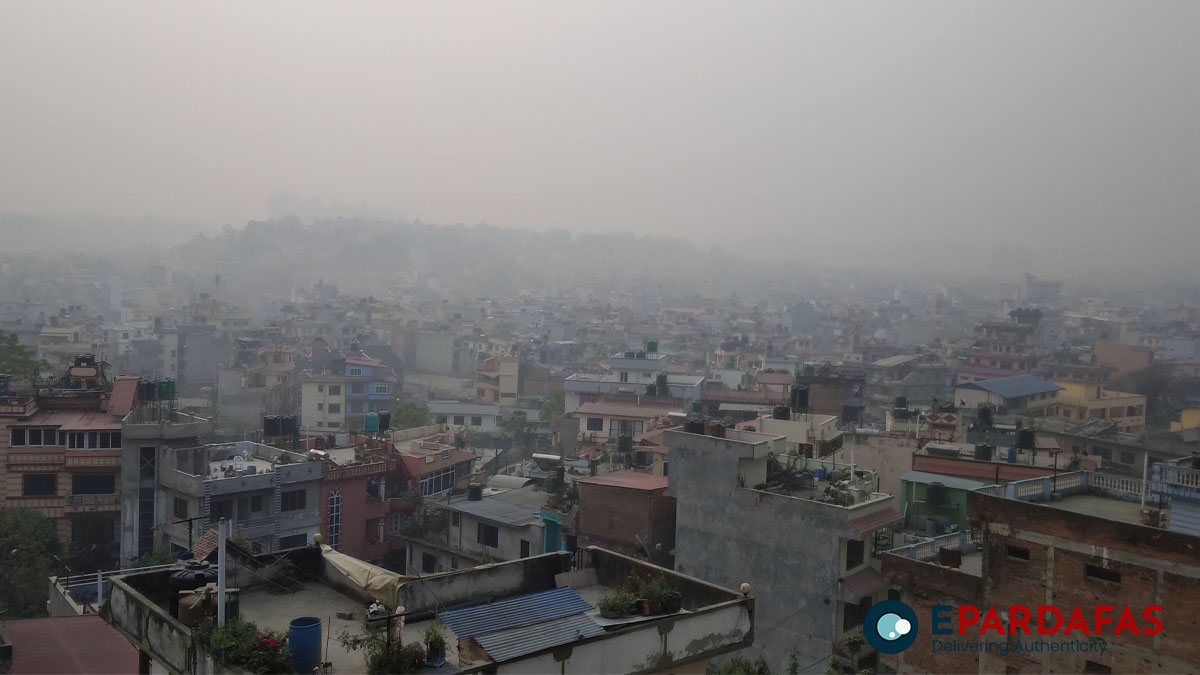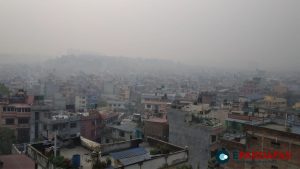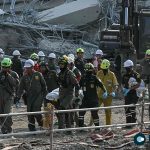
Kathmandu Chokes on Toxic Air as Health Concerns Mount

A dense blanket of smog has engulfed the Kathmandu Valley for several days, sparking growing alarm over public health and environmental inaction. With pollution levels soaring and little respite in sight, residents are left with no option but to stay indoors and brace for worsening conditions.
According to the Air Quality Index (AQI), Nepal’s capital recorded an alarming pollution level of 348 on Thursday afternoon, making Kathmandu the most polluted city globally at the time. An AQI reading above 301 is classified as “hazardous,” posing serious health risks to all segments of the population.
Despite the severity, the government’s response has been largely limited to issuing public notices. Citizens have been advised to remain indoors unless necessary, as healthcare professionals warn of rising respiratory and cardiovascular complications linked to toxic air exposure.
Rising Health Emergency
In a public notice, the Ministry of Health and Population urged residents to exercise extreme caution. Ministry spokesperson Dr. Prakash Budhathoki warned that the polluted air significantly increases the risk of respiratory issues, asthma, heart disease, eye irritation, skin allergies, and other acute health conditions—particularly among children, the elderly, pregnant women, and those with chronic illnesses.
Cardiologist Dr. Ranjit Sharma emphasized that individuals with preexisting heart conditions should avoid outdoor activity, especially in the early morning when pollution is at its peak. “People with heart disease, respiratory ailments, diabetes, and high cholesterol are particularly vulnerable. Everyone should wear masks and avoid unnecessary exposure,” he advised.
Ophthalmologist Dr. Muna Kunwar also reported a surge in eye-related complaints such as conjunctivitis, dryness, and swelling. Dermatologists echoed the need to minimize contact with polluted air, urging residents to stay indoors.
For pregnant women, the stakes are even higher. Dr. Jitentra Pariyar, a gynecologist at Civil Hospital, stressed that the government must introduce and enforce concrete policies to mitigate air pollution, citing its disproportionate impact on maternal health.
Why the Smog Persists
Experts say the combination of weak westerly winds, absence of rain, and the Valley’s bowl-like topography has created a perfect storm for air stagnation. Climatologist and disaster management expert Dr. Dharma Raj Uprety explained that a lack of rainfall and wind has trapped pollution in the valley, with smoke from forest fires and crop residue burning worsening the air quality.
“The rising temperatures, coupled with climate-induced changes in weather patterns, are exacerbating the pollution. Without rainfall, there’s no natural mechanism to clear the air,” Dr. Uprety said.
Meteorologist Pratibha Manandhar from the Weather Forecasting Division confirmed that a significant improvement in air quality is unlikely in the immediate future, as strong winds capable of dispersing the smog are currently absent.
Gyanraj Subedi, Director General of the Environment Department, pointed out that Nepal has experienced declining winter rainfall for the past four years. Combined with increasing forest fires, poor urban infrastructure, and a lack of green spaces, the Valley’s air quality continues to deteriorate.
On Wednesday alone, 253 wildfires were reported across the country, affecting 45 districts, further contributing to the toxic atmosphere.
Call for Urgent Action
Environmental experts are now calling for stronger government action. Environmentalist Bhushan Tuladhar has urged authorities to declare a health emergency, citing AQI levels that exceed 300 as a threshold for disaster.
Senior advocate and environmental rights activist Prakash Mani Sharma described the current situation as a violation of the constitutional right to a clean and healthy environment. “People are being denied a fundamental right enshrined in Nepal’s constitution,” he said.
The Air Quality Management Work Plan for the Kathmandu Valley, 2076 stipulates that pollution levels above AQI 300 should trigger disaster response protocols. However, enforcement remains lax. The Environment Department has admitted that repeated warnings to polluting entities have gone unheeded, and meaningful accountability has yet to be enforced.
As public health experts, environmentalists, and legal advocates raise their voices, the call for immediate, coordinated action has never been louder. Until then, millions in the Kathmandu Valley remain trapped under a cloud of toxic air with few means of escape.












Comments